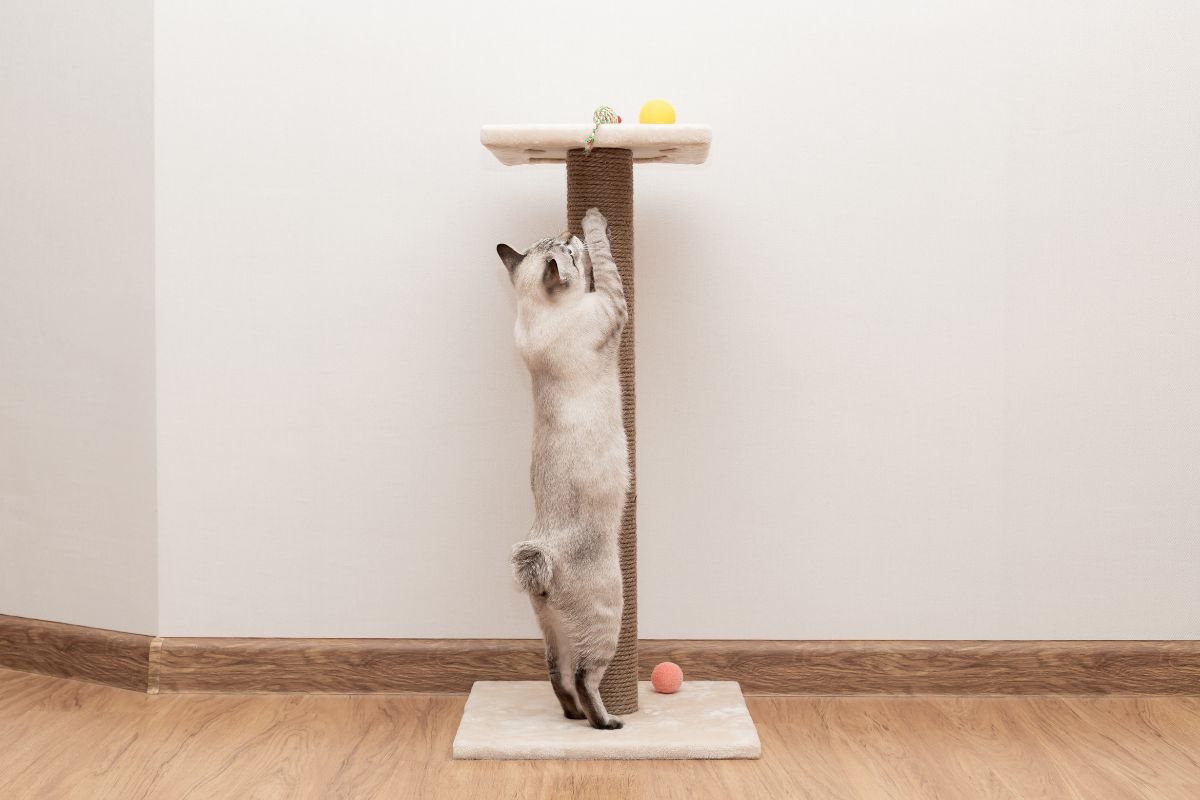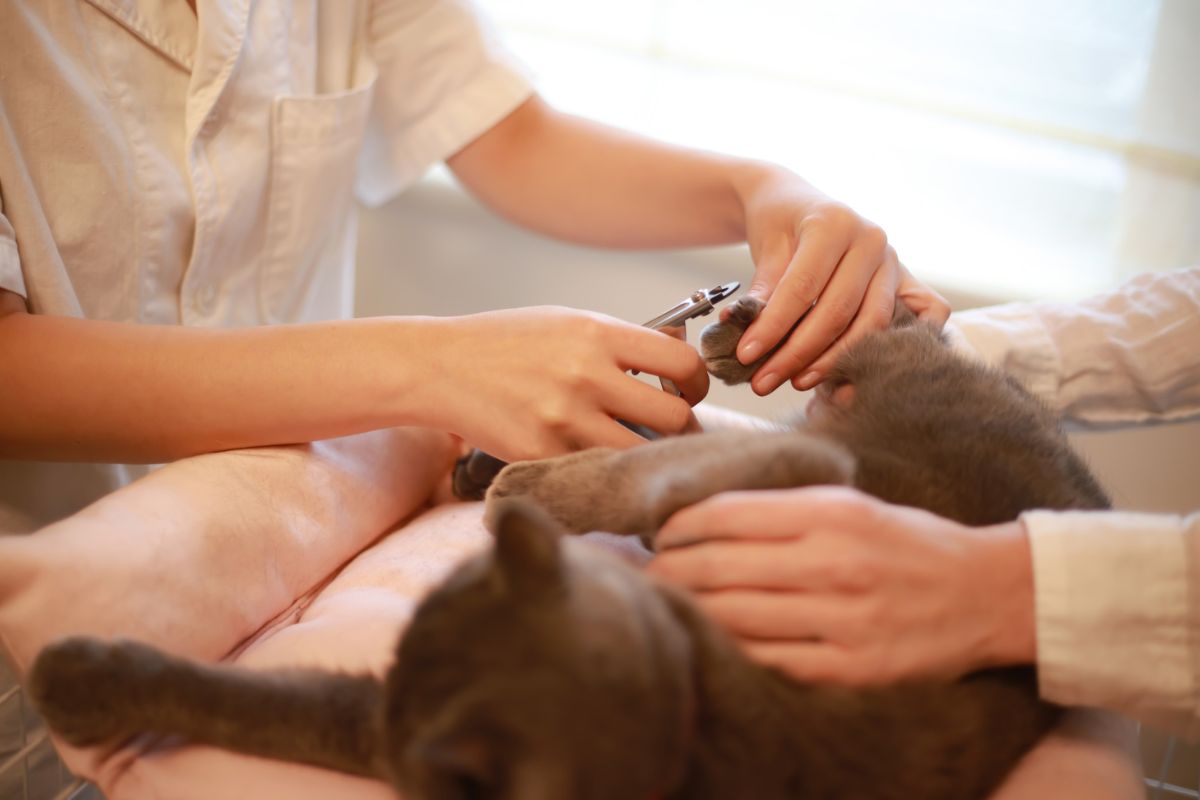Have you ever just finished cleaning the house only to see your cat happily tearing into the sofa or curtains? This habit doesn’t just damage your furniture; it also leaves many cat owners frustrated. In reality, scratching is an instinctive behavior for cats. However, with the right training methods, you can prevent your cat from scratching the sofa and help them develop the habit of rubbing in the designated area.
Why do cats like scratching sofas and chairs?
Cat scratching sofas or wooden chairs is very common. The reasons come from their instincts and needs:
- Sharpening claws: cat claws grow quickly and need to be filed to prevent curling.
- Marking territory: cats have scent glands in their paws, and scratching helps them leave their signature.
- Relieving stress: scratching furniture allows cats to release energy or reduce stress.
So instead of thinking your cat is being “naughty,” you just need to give them an appropriate outlet.

1. Provide scratching posts or pads as alternatives
If you’re wondering “how to stop my cat from scratching the sofa,” the first step is to provide scratching posts or pads.
- Popular materials: sisal rope, cardboard, compressed wood.
- Best placement: near the sofa or in areas your cat often visits.
- Tip: sprinkle catnip or hang toys to attract your cat’s attention.
At first, your cat may not use it immediately, but after a few weeks of consistency, they will start choosing the post instead of the couch.
2. Make the right areas more appealing
One of the most effective ways to train a cat is to make the correct spot more attractive than the wrong one.
- Spray catnip or silvervine on the scratching post.
- Hang dangling toys that make noise to grab attention.
- Reward your cat with treats or petting whenever they scratch the right spot.
At the same time, reduce the sofa’s appeal: cover it with thick fabric, use anti-scratch sprays with citrus scents that cats dislike.

3. Use positive reinforcement, not punishment
When a cat scratches the sofa, many people instinctively scold it. But this often makes cats more anxious. A better approach is:
- Reward immediately when the cat scratches the post.
- Use clickers or verbal praise to associate scratching the right spot with positive feelings.
- Avoid harsh punishment, which only increases stress and can cause more scratching.
With patience over a few weeks, you’ll see a noticeable change in your cat’s behavior.
4. Ensure your cat gets enough exercise and proper nutrition
Cats often scratch furniture not just out of instinct but also due to excess energy. To help them:
- Schedule daily playtime with running, jumping, and climbing.
- Provide puzzle toys to keep them entertained when home alone.
In addition, a balanced diet helps cats stay healthy and less stressed. For example, urinary health formulas such as Vet’s Selection PH Care Plus Stage or Vet’s Selection PH Care Minus Stage support long-term health and help keep your cat in a calm, balanced state.

5. Trim your cat’s claws regularly
A simple but highly effective tip is keeping your cat’s nails short. When claws aren’t too long, their need to scratch to file them down is reduced.
- Use specialized cat nail clippers.
- Only cut the clear, white tip—avoid the quick (pink area with blood vessels).
- If you’re unsure, take your cat to a groomer or vet for help.
You can also try temporary silicone nail caps to protect your furniture while your cat learns new habits.

Extra tips for cat owners
- Be patient: training cats takes time. Don’t expect results in just a few days.
- Understand your cat’s personality: some prefer tall posts, others love flat cardboard scratchers.
- Combine solutions: use posts, anti-scratch sprays, and positive reinforcement together for the best results.
Cat scratching sofas or chairs isn’t a “bad habit”—it’s an instinct. The key to controlling it lies in creating the right environment, patient training, and proper care. With scratching posts, toys, and a little positive reinforcement, you can teach your cat to stop scratching furniture and scratch in the right places instead.
Living with cats becomes much easier once you can protect your furniture while still letting your furry friend express their instincts happily.


 Vietnamese
Vietnamese  日本語
日本語  English
English 



